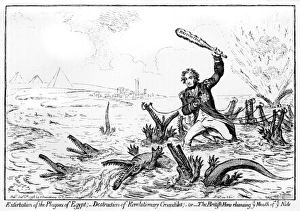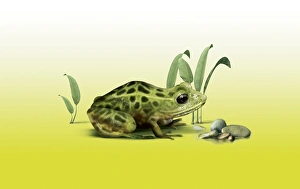Extirpation Collection
"Extirpation: Rediscovering Lost Species and Healing Wounds" In the vivid lithograph titled "Extirpation of the Plagues of Egypt, " we are transported back to 1798
All Professionally Made to Order for Quick Shipping
"Extirpation: Rediscovering Lost Species and Healing Wounds" In the vivid lithograph titled "Extirpation of the Plagues of Egypt, " we are transported back to 1798, witnessing a symbolic representation of the eradication of ancient plagues. This captivating cartoon serves as a reminder that they are take various forms throughout history. One such example is seen in the story of the Grey Mining Bee (Andrena vaga), an adult female diligently carrying pollen. Once abundant in the UK, this species faced extinction in 1946 due to habitat loss and pesticide use. However, against all odds, it has made a triumphant return this year at two sites. The removal of its presence was felt deeply, but now its reappearance brings hope for conservation efforts. The image captures a moment where this resilient bee digs its nest while carrying precious pollen—a testament to nature's ability to heal itself when given a chance. Locally extinct since 1946, these sightings mark an important milestone towards restoring balance within our ecosystems. Just as Marie Jean Pierre Flourens revolutionized neuroscience with his groundbreaking research during the 19th century, so too does each rediscovery contribute to our understanding and preservation of biodiversity today. Extirpation may leave wounds on our natural world, but through scientific advancements and dedicated conservation efforts, we have witnessed remarkable recoveries. Let us not forget about creatures like the Vegas Valley leopard frog depicted in stunning artwork—once threatened by habitat destruction but now thriving thanks to protective measures taken by humans who recognized their importance. As we reflect on these stories and restoration, let them serve as reminders that every action counts in preserving Earth's magnificent tapestry of life. By working together and embracing our responsibility as stewards of nature's wonders, we can ensure future generations inherit a planet teeming with diverse species rather than one scarred by their absence.






